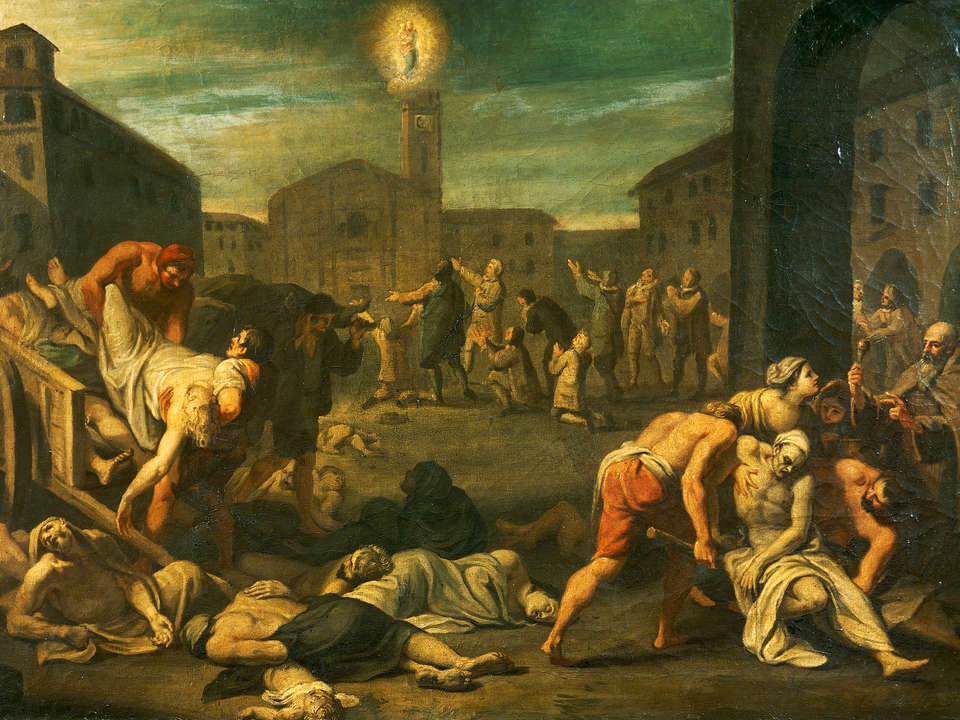11pandemics that changed the course of human history.
https://www.businessinsider.in/science/news/11-pandemics-that-changed-the-course-of-human-history-from-the-black-death-to-hiv/aids-to-coronavirus/articleshow/74695609.cms
1. Prehistoric epidemic: Circa 3000 B.C.
5,000 years ago, an epidemic wiped out a prehistoric village in China. The bodies of the dead were stuffed inside a house that was later burned down. No age group was spared, as the skeletons of juveniles, young adults and middle-age people were found inside the house. The archaeological site is now called "Hamin Mangha" and is one of the best-preserved prehistoric sites in northeastern China
4. Plague of Cyprian: A.D. 250-271
Named after St. Cyprian, a bishop of Carthage (a city in Tunisia) who described the epidemic as signaling the end of the world, the Plague of Cyprian is estimated to have killed 5,000 people a day in Rome alone. In 2014, archaeologists in Luxor found what appears to be a mass burial site of plague victims.Their bodies were covered with a thick layer of lime (historically used as a disinfectant).Archaeologists found three kilns used to manufacture lime and the remains of plague victims burned in a giant bonfire.
6. The Black Death: 1346-1353
Black Death traveled from Asia to Europe, leaving devastation in its wake. Some estimates suggest that it wiped out over half of Europe's population. It was caused by a strain of the bacterium Yersinia pestis that is likely extinct today and was spread by fleas on infected rodents. The bodies of victims were buried in mass graves
Economic impact of epidemics and pandemics
Fall in production due to workers taking more time off sick - Affects Supply in Economy
People reducing their social consumption in an effort not to get the disease - Affects Demand in Economy
Loss of income through reductions in the size of the labour force and productivity. Example, a 2019 joint report from the World Health Organization (WHO) and the World Bank estimates the impact of such a pandemic upwards, bringing the total cost to 2.2 %-4.8 % of global GDP (US$3 trillion).
Vulnerable populations, particularly the poor, are likely to suffer disproportionately from an outbreak, as they may have less access to health care and lower savings to protect against financial catastrophe.
Agriculture Sector: Given that around 60 % of emerging infectious diseases reported globally are zoonoses (i.e. naturally transmitted diseases between people and vertebrate animals), virus outbreaks may result in significant costs to a country's agricultural sector and trade.
Tourism: Sharp Decline - A 2013 paper estimates the economic impact to the Mexican tourism sector of the H1N1 influenza pandemic, by examining tourist arrivals. Mexico lost almost one million overseas visitors, which is estimated to have resulted in losses of around US$2.8 billion. This extended over a five-month period, mostly because of the slow return of European travellers to the country. Many provincial governments decided to close many natural attractions (e.g. nature reserves) temporarily. With fewer tourists, and lower consumption, the retail, hospitality and entertainment sectors also suffer.






